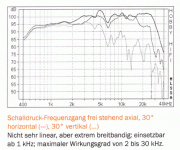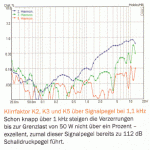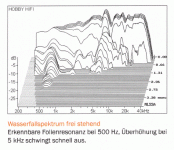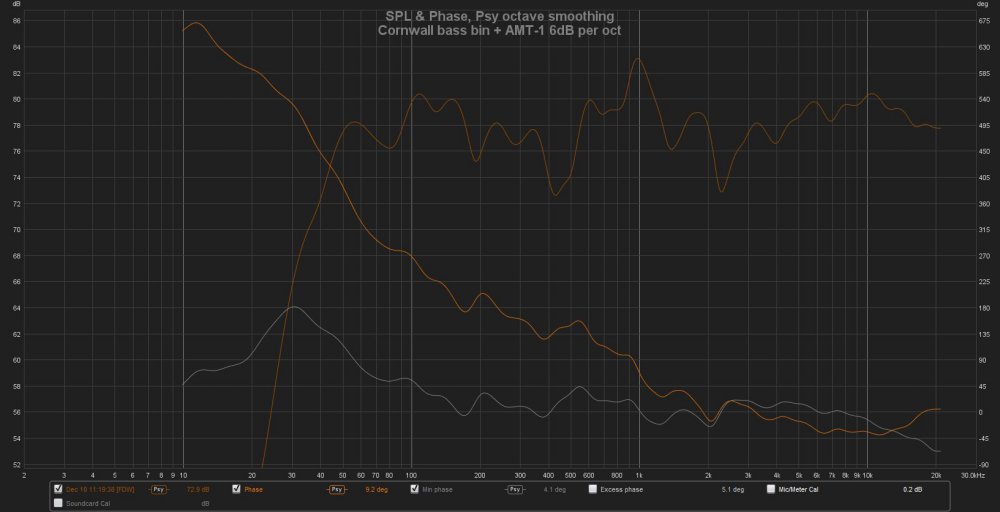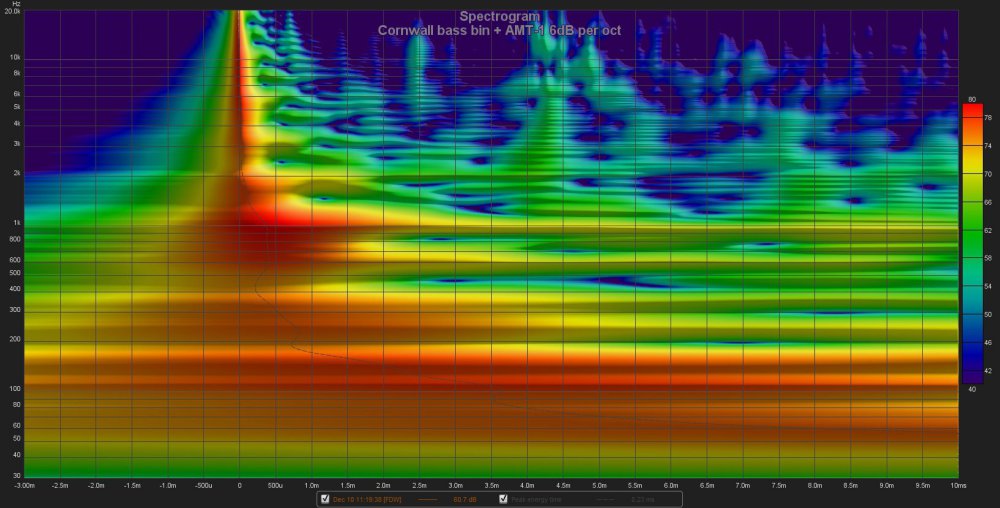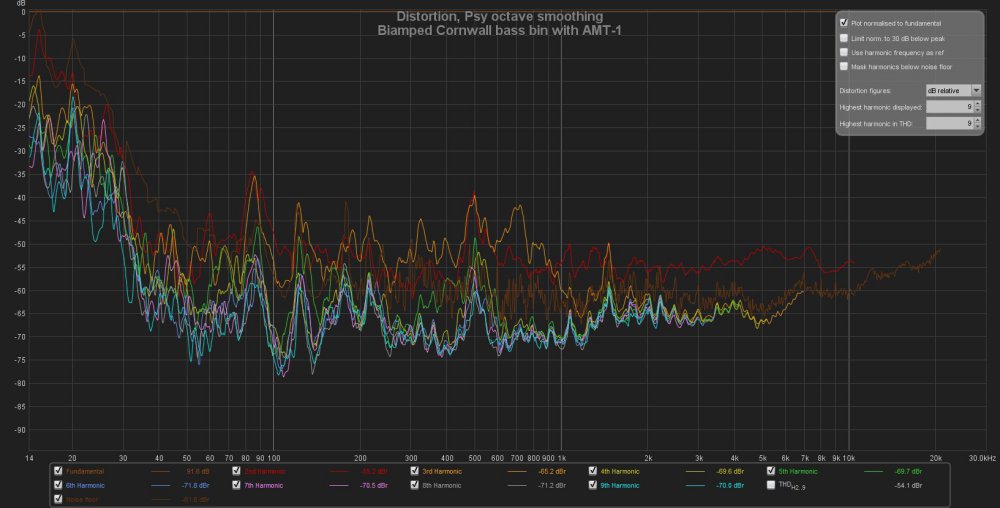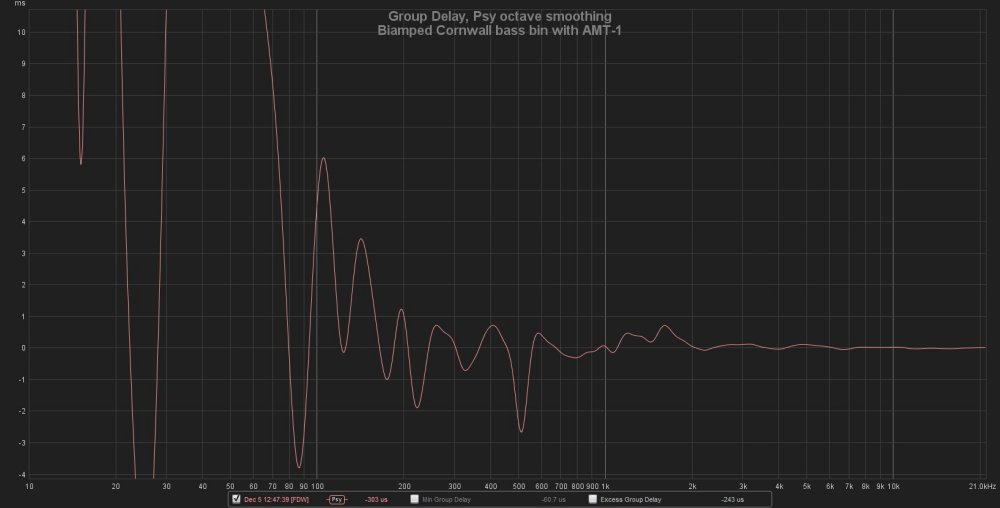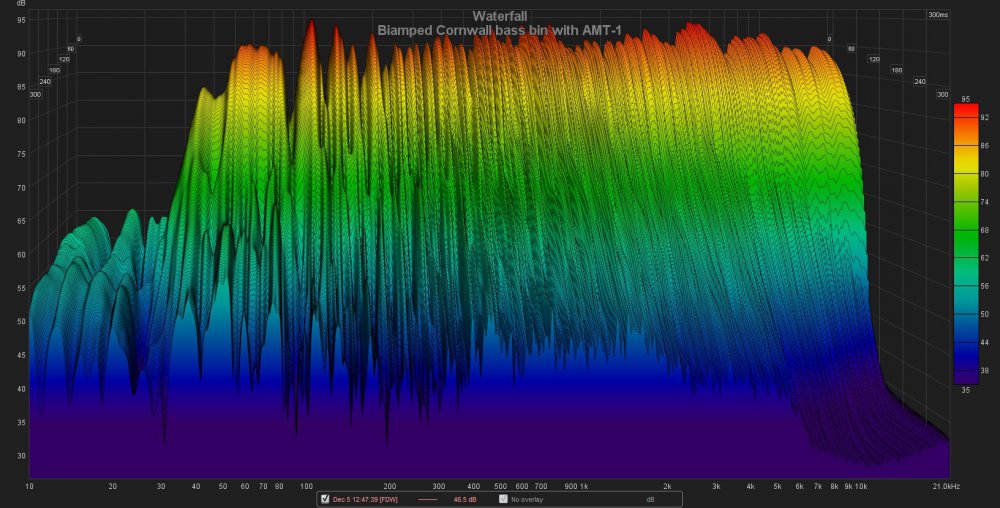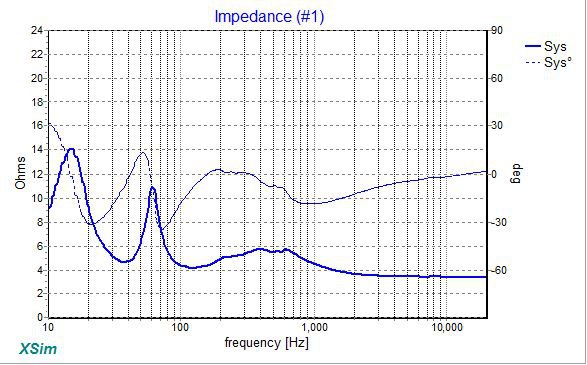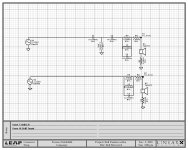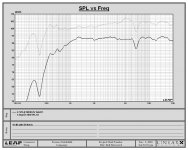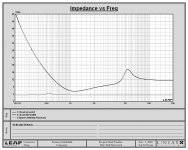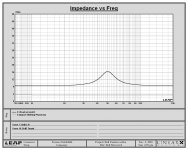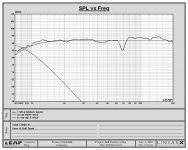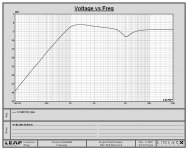HEIL AIR-MOTION TRANSFORMER (AMT)
-a good driver for dsp (to improve linearity).
The original "I" (..though note that production quality isn't terribly consistent):
-a good driver for dsp (to improve linearity).
The original "I" (..though note that production quality isn't terribly consistent):
Attachments
What do folks think about the new Heil AMTs? Looks like the manufacturer is selling them for $140 on its website!
Maybe the end of the line -- or just a big-*** sale.
For $140 it seems hard to beat, or am I just overly-optimistic?
The AMT patent expired a few years back. So there's a bunch of vendors selling AMTs. I'm guessing ESS Labs is just trying to stay competitive.
Some plots using a Klipsch Cornwall bass bin and ESS AMT-1 performance after about a week of AMT-1 use (taken from here), and a notional first order network for passive crossover crossing at 800 Hz:
[..some pretty diagrams..]
While your measurement plots look incredibly awesome, they aren't of any significance; you've not disclosed on how these measurements were taken (measurement mic, enviroment, distance, spl, gate, room etc) nor is that crossover actually usable, no wonder there's a 800Hz resonance in the graph. No information on angled measurementsor the room energy balance. Once you'd want to get significant dynamics (let's say 105dB/1m), a merely 6dB slope and a that low crossover frequency will result in a HUGE distortion peak and several significant decay ridges.
An extremely low crossover frequency AND a extremely slow slope at the same time result in horrible sound once any dynamics are arising.
Or in other words: Your measurements don't say anything. Repeat with feasable scaling, crossover, different spl levels and at least some measurement informations and it might say something at last.
While your measurement plots look incredibly awesome, they aren't of any significance...Once you'd want to get significant dynamics (let's say 105dB/1m), a merely 6dB slope and a that low crossover frequency will result in a HUGE distortion peak and several significant decay ridges...An extremely low crossover frequency AND a extremely slow slope at the same time result in horrible sound once any dynamics are arising.
Or in other words: Your measurements don't say anything. Repeat with feasable scaling, crossover, different spl levels and at least some measurement informations and it might say something at last.
You talk as if you wanted more information, but curiously, you ask in such a way that appears pretentious--and frankly--offensive. Why is that? Have I inadvertently insulted in some way?
Others here can certainly ask specific questions if they want. Or they can simply go to the thread already linked above from where the combined figures originally were posted...and read. I'll be happy to answer any further questions--but if they are phrased as questions--not insults.
[My apologies to the OP for this distraction.] I kept the information posted to a minimum--plots only--to give some feel to others on how the AMT-1's acoustic and electrical measurements might work out for them. No one asked for this information, but I provided it for passing interest only.
It is this kind of behavior, i.e., of the type quoted just above by "ICG", that most leaves me wondering why anyone would try to post in this forum.
Chris
Last edited:
dtaylo3, that certainly represents a pretty steep discount over their normal prices - hopefully not a portent. As Patrick noted, with all the competition in this class of driver, maybe ESS was stuck with an abundance of stale inventory that the bean counters/ bankers advised to write down?
I’ve used original production AMT1s on a couple of projects, and they are still among my favorite tweeters, but I’d certainly need ICG’s cautions.
I’ve used original production AMT1s on a couple of projects, and they are still among my favorite tweeters, but I’d certainly need ICG’s cautions.
What do folks think about the new Heil AMTs? Looks like the manufacturer is selling them for $140 on its website!
Maybe the end of the line -- or just a big-*** sale.
For $140 it seems hard to beat, or am I just overly-optimistic?
Thanks for this thread dtaylo3. I've been wanting a pair for a long time but never pulled the plug. Today I did. $140 is a great price and free shipping to boot.
You talk as if you wanted more information, but curiously, you ask in such a way that appears pretentious--and frankly--offensive. Why is that? Have I inadvertently insulted in some way?
I said that your measurements are without significance. And I said why. You seem upset someone noticed that. Why is that?
It is this kind of behavior, i.e., of the type quoted just above by "ICG", that most leaves me wondering why anyone would try to post in this forum.
It's fine if you don't want to learn something. But to post a few measurements without measuring enviroment and hardware used or on which spl the measurements are done doesn't say anything and doesn't help anyone.
There is a post over at the Lansing Forum concerning the Heil with a 12 inch JBl driver. The crossover shown appears to be at about 1200 hz. I am interested as I have some old JBL 123a woofers and may try the woofer high pass out of the JBL S 70 AlphaIII. The FS of the Heil is about 500...so I think an 800 crossover is “pushing it” a bit but somewhere on the net there is a schematic for the Ess Heil Special Edition speaker dated 2013...I do not have any measuring equipment or design experience so I will just follow along.
"There is a post over at the Lansing Forum concerning the Heil with a 12 inch JBl driver."
Hello
I am the op on that thread and ESS used an 18db network with the original driver with an 800Hz crossover point. To build your speaker you are going to need driver measurements from your designed listening point with the drivers in the actual enclosure you plan on using so basically you bass driver in it's box with the Heil on top as an example. If you go passive you are going to need a notch filter to help smooth out the 5K peak and pay particular attention to the impedance. As an example here is an 18db network with a notch and an active 24db network with a notch.
Rob
Hello
I am the op on that thread and ESS used an 18db network with the original driver with an 800Hz crossover point. To build your speaker you are going to need driver measurements from your designed listening point with the drivers in the actual enclosure you plan on using so basically you bass driver in it's box with the Heil on top as an example. If you go passive you are going to need a notch filter to help smooth out the 5K peak and pay particular attention to the impedance. As an example here is an 18db network with a notch and an active 24db network with a notch.
Rob
Attachments
Last edited:
dtaylo3, that certainly represents a pretty steep discount over their normal prices - hopefully not a portent. As Patrick noted, with all the competition in this class of driver, maybe ESS was stuck with an abundance of stale inventory that the bean counters/ bankers advised to write down?
I’ve used original production AMT1s on a couple of projects, and they are still among my favorite tweeters, but I’d certainly need ICG’s cautions.
One of my favorite sounding tweeters too. Very natural. So natural that a neat effect is that it sounds like the singer has been shrunken and is living in your tweeter if you just hold the tweeter and listen to it close up.
- Home
- Loudspeakers
- Multi-Way
- To Heil AMT or not to Heil at $140, that is the question?
